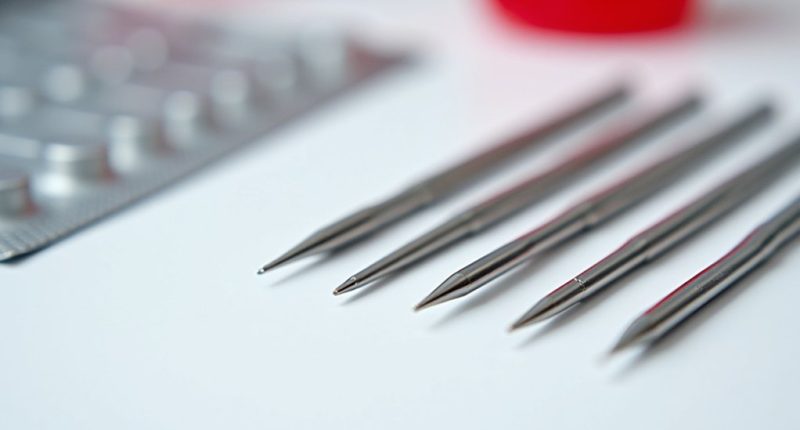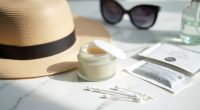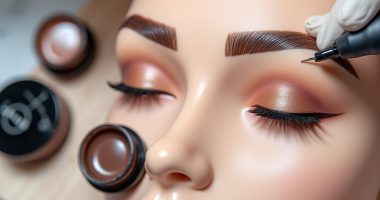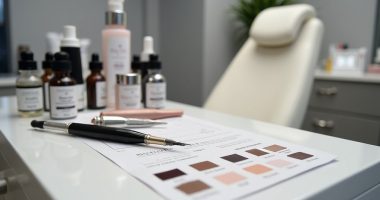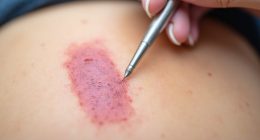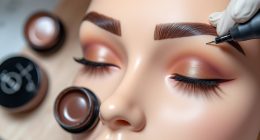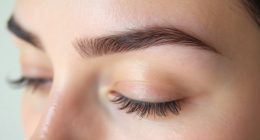PMU needles aren't just pointy metal bits. They come in various configurations—round liners for precision outlines, shaders for color filling, and magnums for larger areas. Size matters too: thinner 0.18mm needles work on delicate skin, while 0.35mm create bold lines. Always use single-use, sterile needles in proper packaging. The wrong needle choice? Your client's face pays the price. The difference between amateur and pro often comes down to this tiny tool.
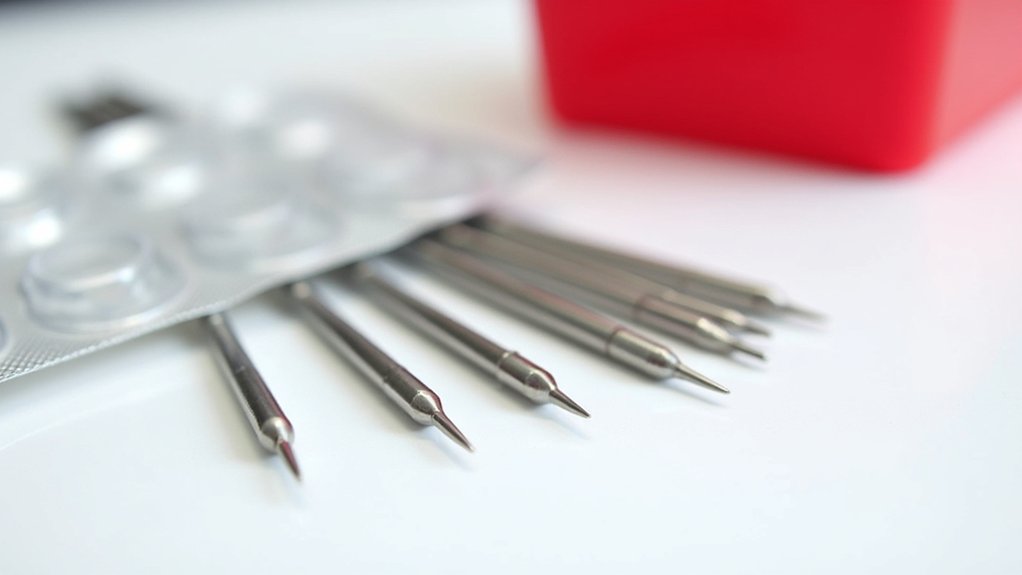
The world of permanent makeup artistry hinges on one essential tool—needles. These tiny implements make all the difference between stunning brows and a botched job. Not all PMU needles are created equal. Really. The market offers several needle types, each designed for specific techniques and effects.
Round liners create precise outlines. Round shaders fill in color. Magnums tackle larger areas. Flat needles? Perfect for geometric work. And don't forget slope needles—the jack-of-all-trades in the PMU world.
Needle safety isn't optional—it's non-negotiable. Every professional artist knows this. Single-use, sterile blister packaging protects both client and artist. Safety membranes prevent backflow contamination, because nobody wants blood or pigment where it doesn't belong. Premium needles with safety membrane protect tattoo machines from potential damage caused by backward flow of pigment and fluids.
Medical-grade stainless steel guarantees durability and sharpness. The needle's got to be sharp. Dull needles cause trauma. They hurt more. They heal worse. End of story.
Configuration matters significantly in achieving different effects. Single needles (1R) create those coveted hair-like strokes. Three-round (3R) produces thin lines and subtle shading. Need bolder lines? Go for 7R. Magnum configurations pack color efficiently—important for fuller coverage. It's like choosing the right brush for painting. Wrong brush, wrong result.
Diameter choices affect pigment deposit and skin interaction. Ultra-fine 0.18mm works beautifully on delicate skin. Standard 0.25mm handles most procedures. For firmer skin or faster deposit, 0.30mm does the trick. Bold lines? That's where 0.35mm shines. And the 0.40mm? It's the heavyweight champion of large area coverage.
Don't overlook taper length. Standard tapers work for general use, but precision demands longer tapers. Double long tapers excel at fine details. Extra long tapers minimize trauma. Super long tapers? They're for the most delicate work imaginable. Your client's comfort depends on this choice.
Selecting the right needle requires consideration of multiple factors: the specific procedure, client's skin type, desired effect, and necessary precision. Artists must match needle configuration to technique. Hairstrokes need different needles than powder brows. Obvious, maybe. But vital. Just as important is pairing needles with high-quality pigments that ensure color consistency and longevity in the final results.
Proper disposal is equally important as selection. Sharps containers exist for a reason. And needle protrusion should be 2-3mm for ideal pigment flow. Clean tips frequently during procedures. No exceptions. Because in PMU, the details make all the difference. And it all starts with the needle. Quality inspection of needles under microscope can reveal potential deformities, as research shows deformed tips can measure up to 16 μm in diameter, significantly affecting performance and client comfort.
Frequently Asked Questions
Can I Reuse PMU Needles for Multiple Clients?
No. Reusing PMU needles is a serious health hazard—actually, it's criminal.
Needle safety protocols exist for a reason. Blood. Pathogens. Infections. Each needle potentially carries dangerous bacteria and viruses between clients.
Client hygiene demands single-use, sterile equipment, period. Health departments will shut down shops that reuse needles faster than you can say "hepatitis."
The industry standard isn't just a suggestion—it's mandatory. Open new, sealed cartridges in front of each client. Every. Single. Time.
How Do I Properly Dispose of Used PMU Needles?
Used PMU needles require proper disposal—this isn't optional.
Safety protocols dictate using FDA-approved sharps containers (puncture-resistant, leak-proof) marked with biohazard symbols. Fill only to 3/4 capacity.
Never, ever toss in regular trash. Options? Medical waste facilities, professional pickup services, or mail-back programs. Local health departments offer guidelines too.
Remember those containers need to stay upright and close to use points. Breaking the rules? Hello, fines and penalties. Not worth the risk.
Do Different Skin Types Require Specific Needle Configurations?
Absolutely. Different skin types demand specific needle configurations for ideal results.
Oily skin? Needs thicker needles (0.30-0.35mm) to combat pigment spreading.
Dry skin works beautifully with finer needles (0.20-0.25mm).
Talk about needle types and skin compatibility!
Sensitive skin requires gentler configurations with longer tapers—less trauma that way.
Combination skin? It's complicated. Requires versatile needles (0.25-0.30mm) and adapting techniques for different facial areas.
One-size-fits-all approach? Yeah, that's a recipe for disaster.
What's the Average Lifespan of Quality PMU Needles?
Quality PMU needles typically last 1-3 years when properly stored.
Needle longevity depends heavily on storage conditions—cool, dry places away from sunlight are best. No surprise there.
The manufacturing quality factors make a huge difference too. Properly made needles with medical-grade materials simply last longer.
Unopened, they remain sterile for 3-5 years.
But once that package is opened? Use it or lose it—24 hours and it's trash. Simple as that.
Are There Needles Specifically Designed for Sensitive Skin Areas?
Yes, there are absolutely needles designed for sensitive skin areas.
Specialized types include long taper needles that minimize trauma and ultra-thin needles (0.18-0.20mm) that reduce irritation. Skin sensitivity is a major factor in needle selection.
For eyeliner work? Go with 1RL needles. Lips need medium taper or "S-Soft" varieties.
Manufacturers aren't just making this stuff up – different skin textures require different tools. Makes sense, right?
Face it: one needle doesn't fit all.
